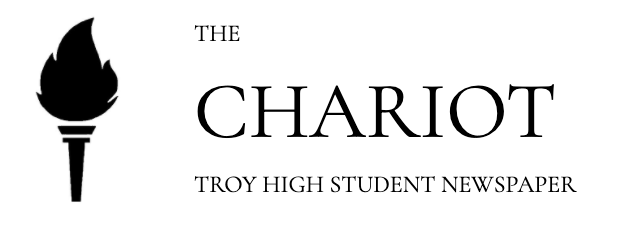The Equity and Inclusion Commitment
Students and teachers share their perspectives on the Troy School District’s commitment to equity and inclusion.
The TSD’s commitment to equity and inclusion aims to support all students
On Thursday, June 2, parents from all across the Troy School District received an email from Superintendent Rich Machesky about a commitment to equity. Following the deaths of Ahmaud Arbery, Breonna Taylor, George Floyd and other Black lives, Dr. Machesky emphasized the need for enhancing a more inclusive learning environment.
Dr. Machesky’s email explained that the school district truly reflects the word “diversity” through the various cultures, ethnicities, races and languages spoken in the Troy community. However, he also acknowledged the district can do better, describing how being “not racist” just isn’t enough. With that, he promised students a clear application of inclusion in the curriculum.
English teacher Laura Liamini adds her insight for why equity in education is not just a desire, but a necessity.
“Equity in education corrects the opportunity gap in order to bring positive social and economic outcomes for all students,” Liamini said. “Teachers nationwide need to push for equity in education, working towards a more culturally responsive classroom. This is true in environment and curriculum.”
The Troy Chariot reached out to Natalie Haezebrouck, director of Teaching and Learning, about what training teachers, like Liamini, went through at their annual professional development this summer and what the district is currently doing to become more inclusive.
“Teachers and administrators across the district have been championing this work in smaller pockets, but we recognize that this work will only take root if it is approached systemically,” Haezebrouck said. “Many of our students have also shared their experiences challenging us to reflect on and call for more student voices as we move this work forward. There is a core group of teachers and administrators who have been working together to plan learning experiences for teachers that address anti-racist teaching. This summer, marked the formal beginning of this work. We have many staff members who continue to engage in their own learning by reading and engaging in book groups on titles such as, How to be an Anti-Racist and Stamped from the Beginning just to name a few.”
As Haezebrouck explained, the Troy School District is definitely showcasing their efforts toward equity and inclusion, but senior Luna Samman adds her opinion to the plan and how it could better pertain to students’ and teachers’ needs.
“It doesn’t matter if it’s an attempt if it’s not effective,” Samman said. “…Older, acquired books that we read like Huckleberry Finn and To Kill a Mockingbird are all coated with such inherently racist, disgusting language. In earlier English years, we never had a discussion, we never analyzed [books], and relayed [them] to real-world context.”
Liamini adds some advice for how she is encouraging these types of discussions in her own classroom and how other teachers can potentially do the same.
“Encouraging discussion like that involves reading a great diversity of works by persons of color, while reflecting on our own individual lived experience,” Liamini said. “How I’m implementing it will always be a work in progress, and I welcome my students thoughts and suggestions on that work in progress.”
Liamini also elaborated as to why she believes that some teachers haven’t explicitly adopted an anti-racist curriculum.
“It’s about learning what your own lived experience is, recognizing privilege, recognizing systemic racism, and everyone is at different stages in this work,” Liamini said.
Although the Troy School District has not put a typed plan together for the addition of equity and inclusion, Haezebrouck has stated that it is currently in the works.
If students are interested in sharing their experiences, they can also add to the Student Voice Project, a plan put together by administration to allow students to share their personal experiences with racism in the TSD.
While many students, like Samman, appreciate the Troy School District’s additional focus on equity, they also want to see change. They want to have steady communication and ensure that this isn’t just performative activism. The Chariot will continue to report on developments as a formal plan is released.
Your donation will support the student journalists of Troy High School - MI. Your contribution will allow us to print our work, purchase equipment and cover our annual website hosting costs.


